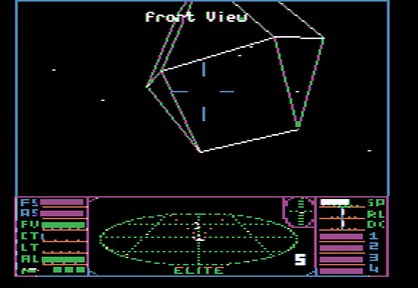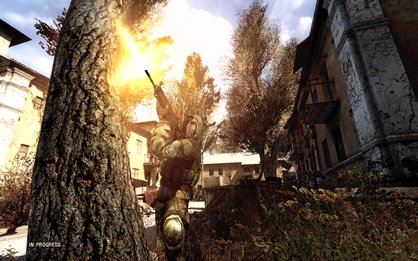The roots of open-world games
It all began long before "sandbox" became a gaming-household word
Todd Howard, game director at Bethesda reckons gamers love freedom. “They feel more like the character they’re playing.” he explains. “They’re doing what they want to do and not what you, the designer, wants them to do. The more open, the more reactive you can make it, the better the player experience.” Rather than presenting us with a thrilling, scripted rollercoaster ride, titles such as The Elder Scrolls IV: Oblivion and the forthcoming Fallout 3 present us with vast worlds that we can inhabit, and decide what kind of character we want to be – whether it’s a Redguard bard with a penchant for alchemy or a lone Jet addict and his dog battling mutants in a post-nuclear wasteland.
Of course, no one is going to deny that linear games such as Half-Life 2 and Call of Duty 4 are any less than superb despite their A-to-B nature, but over the next few pages and beyond, we’re going to celebrate open-world gaming – mammoth titles including Midwinter and Grand Theft Auto, plus new games such as Armed Assault 2 and discover what it takes to deliver a living, breathing universe where the player is free to roam...

Above: Elite – thrilling geometry
The first truly open-world game was made for theBBC Microand Acorn Electronback in 1984 – David Braben and Ian Bell’sElite. Until then, space games were flat, 2D experiences where you were restricted to a choice of when to move your ship and fire laser bolts at ever-descending dot-matrix aliens. Elite created a believable open-ended wire frame universe of planets, political systems, economies, trading routes and space stations, in which you could explore the galaxies and define your Commander Jameson – would you live the life of a bounty hunter, a miner, a trader or a pirate?
Soon after Elite, Mike Singleton, already a legend for creating the Tolkien-inspired The Lords of Midnight on the ZX Spectrum, delivered the seminal PC gameMidwinterin 1989. Set in a snowy post-nuclear war wasteland, Midwinter had many innovations – it was one of the first solid-3D games, allowed you to use more than 30 vehicles including hang gliders and snowmobiles, introduced a sniper rifle and was – revolutionary, this – completely non-linear. The player could locate, recruit and control any of the last survivors of the human race scattered over 160,000 square miles of terrain.

Above: The new breed of STALKER will refine AI even further...
“It was inspired by a desire to recreate an in-depth, free-roaming world where you have an almost infinite number of ways to approach the game and win it,” says Singleton. Even now, when many shooters rely on ‘action bubble’ mechanics to give a feeling of the non-linear (such as Far Cry or Crysis) Midwinter’s level of strategic depth is entirely remarkable. Operation Flashpoint creators Bohemia Interactive’s community manager Paul R. Statham believes that giving gamers such freedom to express themselves within a virtual universe is infinitely more immersive because it taps into our “don’t tell me what to do” mentality. Everybody wants to buck the rules in the real world, so in the virtual world it follows suit.
Sign up to the GamesRadar+ Newsletter
Weekly digests, tales from the communities you love, and more


